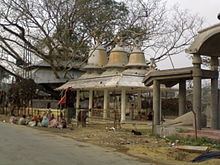Area 3,790 km² Tehsil 1. | Website Official website Literacy 70.9% | |
 | ||
Major highways National Highway 37, National Highway 38, National Highway 153 Colleges and Universities Points of interest | ||
Assam s tinsukia district rocked by 4 ied blast oneindia news
Tinsukia district (Pron:ˌtɪnˈsʊkiə) (Assamese: তিনিচুকীয়া জিলা) is one of the 27 administrative districts in the state of Assam, India. The district headquarters are located at Tinsukia. Tinsukia district occupies an area of 3,790 square kilometres (1,460 sq mi),
Contents
- Assam s tinsukia district rocked by 4 ied blast oneindia news
- Map of Tinsukia Assam
- Indian railways bcna rake at tirap colliery ledo tinsukia district assam
- Towns
- History
- Economy
- Transport
- Demographics
- Tourism
- Places of interest
- Flora and fauna
- References
Map of Tinsukia, Assam
Indian railways bcna rake at tirap colliery ledo tinsukia district assam
Towns
History
The areas of the present district was an integral part of the Sutiya kingdom during the medieval period. The ancient name of Tinsukia city was Bengmara. It was the capital of the Muttack Kingdom. Sarbananada Singha established his capital at Rangagarah situated in the bank of river Guijan. In 1791 AD, he transferred his capital to the city of Bengmara. Bengmara was built by King Sarbananda Singha with the help of his Minister, Gopinath Barbaruah (alias Godha). The city was built in the middle of the present city of Tinsukia. It was declared the 23rd district of Assam on 1 October 1989 when it was split from Dibrugarh.
Several tanks were dug in the days of Sarbananda Singha viz. Chauldhuwa Pukhuri, Kadamoni pukhuri, Da Dharua Pukhuri, Mahdhuwa Pukhuri, Bator Pukhuri, Logoni Pukhuri, Na-Pukhuri, Devi Pukhuri, Kumbhi Pukhuri, Rupahi Pukhuri etc.
Apart from these ponds there are many ancient roads constructed in different parts of the Muttack territory. Godha-Borbaruah road, Rangagarah road, Rajgor road and Hatiali road were main roads within the territory.
In 1823, the British first discovered tea plants in Sadiya and the first tea plantation was started in Chabua near Tinsukia. (The name Chabua comes from "Chah-Buwa"/tea plantation).
In 1882, the Dibru-Sadiya Railway was opened to traffic by the Assam Railway & Trading Company, centred on Tinsukia, and a turning point in the economic development of north-east India.
Economy
Tinsukia is an industrial district of Assam. The Oldest oil refinery in India is situated at Digboi and places like Margherita and Ledo are famous for open cast coal mining.
Tinsukia is one of the premier commercial centres in Assam. It is an industrial district, yet it produces a sizeable amount of tea, oranges, ginger, other citrus fruits and paddy (rice). The district also has a cosmetic plant of Hindustan Unilever (HUL).
Transport
Tinsukia is well connected by air, national highway and railway. It is only 532 km by road from Dispur, the State Capital of Assam. The nearest airport is Dibrugarh Airport at Dibrugarh which is about 40 km from Tinsukia with daily connection from Delhi/Guwahati and Kolkata. The New Tinsukia railway station connects Tinsukia with the rest of the country.
Demographics
According to the 2011 census Tinsukia district has a population of 1,316,948, roughly equal to the nation of Mauritius or the US state of New Hampshire. This gives it a ranking of 371st in India (out of a total of 640). The district has a population density of 347 inhabitants per square kilometre (900/sq mi) . Its population growth rate over the decade 2001-2011 was 14.51%. Tinsukia has a sex ratio of 948 females for every 1000 males, and a literacy rate of 70.92%.
Hindus 1,029,142, Christians 62,403, Muslims 40,000 (3.47%). The major communities of the district are Tea tribes (Adivasi), Ahoms, Sonowal Kachari, Sutiya, Moran, Muttock, Singpho etc. Besides there are lots of migrant communities like Nepali, Bihari and Bengali. There are also few small tribes like Tai Phake, Khamyang, Nocte etc.
Tourism
Dibru Saikhowa National Park is famous for birds ([see video in YouTube [1]) and is one of the bio-diversity-hot-spots with over 350 species of avifauna providing unique habitat for globally threatened species. A safe for extremely rare white winged wood duck and many migratory birds. Its Wild-Horses, called Feral Horses, are precisely sufficient to make the visitor wild.
Dihing Patkai wildlife sanctuary is one of the last remaining lowland tropical wet evergreen forests of Assam. It spreads over an area of 300 km2. in the southern and eastern parts of the district. It is home to various types of wildlife like the hoolock gibbon, pig-tailed macaque, slow loris, tiger, elephant, clouded leopard, hornbills etc.
An ayurvedic spa has been opened recently which offers traditional ayurvedic KERALA massage by a trained therapist. The Nature Cure Centre at Barooah Lodge, behind Barooah market also provides Jacuzzi baths (hydrotherapy), acupressure treatment and physiotherapy as well. The massage given here has therapeutic values and has the power to rejuvenate the body.
Places of interest
Flora and fauna
In 1999 Tinsukia district became home to Dibru-Saikhowa National Park, which has an area of 340 km2 (131.3 sq mi). It shares the park with Dibrugarh district.
